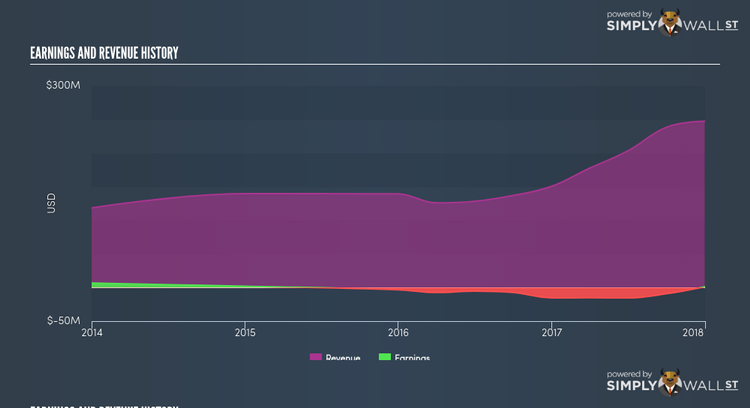What Kind Of Risk Should You Expect For DASAN Zhone Solutions Inc (NASDAQ:DZSI)?

If you are looking to invest in DASAN Zhone Solutions Inc’s (NASDAQ:DZSI), or currently own the stock, then you need to understand its beta in order to understand how it can affect the risk of your portfolio. Every stock in the market is exposed to market risk, which arises from macroeconomic factors such as economic growth and geo-political tussles just to name a few. This is measured by its beta. Not all stocks are expose to the same level of market risk, and the broad market index represents a beta value of one. Any stock with a beta of greater than one is considered more volatile than the market, and those with a beta less than one is generally less volatile.
View our latest analysis for DASAN Zhone Solutions
What is DZSI’s market risk?
With a beta of 3.69, DASAN Zhone Solutions is a stock that tends to experience more gains than the market during a growth phase and also a bigger reduction in value compared to the market during a broad downturn. Based on this beta value, DZSI can help magnify your portfolio return, especially if it is predominantly made up of low-beta stocks. If the market is going up, a higher exposure to the upside from a high-beta stock can push up your portfolio return.
How does DZSI’s size and industry impact its risk?
DZSI, with its market capitalisation of US$182.22M, is a small-cap stock, which generally have higher beta than similar companies of larger size. Furthermore, the company operates in the communications industry, which has been found to have high sensitivity to market-wide shocks. So, investors should expect a larger beta for smaller companies operating in a cyclical industry in contrast with lower beta for larger firms in a more defensive industry. This is consistent with DZSI’s individual beta value we discussed above. Next, we will examine the fundamental factors which can cause cyclicality in the stock.
Can DZSI’s asset-composition point to a higher beta?
During times of economic downturn, low demand may cause companies to readjust production of their goods and services. It is more difficult for companies to lower their cost, if the majority of these costs are generated by fixed assets. Therefore, this is a type of risk which is associated with higher beta. I examine DZSI’s ratio of fixed assets to total assets to see whether the company is highly exposed to the risk of this type of constraint. Given that fixed assets make up less than a third of the company’s total assets, DZSI doesn’t rely heavily upon these expensive, inflexible assets to run its business during downturns. As a result, the company may be less volatile relative to broad market movements, compared to a company of similar size but higher proportion of fixed assets. However, this is the opposite to what DZSI’s actual beta value suggests, which is higher stock volatility relative to the market.
What this means for you:
You may reap the gains of DZSI’s returns during times of economic growth by holding the stock. Its low fixed cost also implies that it has the flexibility to adjust its cost to preserve margins during times of a downturn. I recommend analysing the stock in terms of your current portfolio composition before deciding to invest more into DZSI. In order to fully understand whether DZSI is a good investment for you, we also need to consider important company-specific fundamentals such as DASAN Zhone Solutions’s financial health and performance track record. I highly recommend you to complete your research by taking a look at the following:
Financial Health: Is DZSI’s operations financially sustainable? Balance sheets can be hard to analyze, which is why we’ve done it for you. Check out our financial health checks here.
Other High-Performing Stocks: Are there other stocks that provide better prospects with proven track records? Explore our free list of these great stocks here.
To help readers see pass the short term volatility of the financial market, we aim to bring you a long-term focused research analysis purely driven by fundamental data. Note that our analysis does not factor in the latest price sensitive company announcements.
The author is an independent contributor and at the time of publication had no position in the stocks mentioned.

